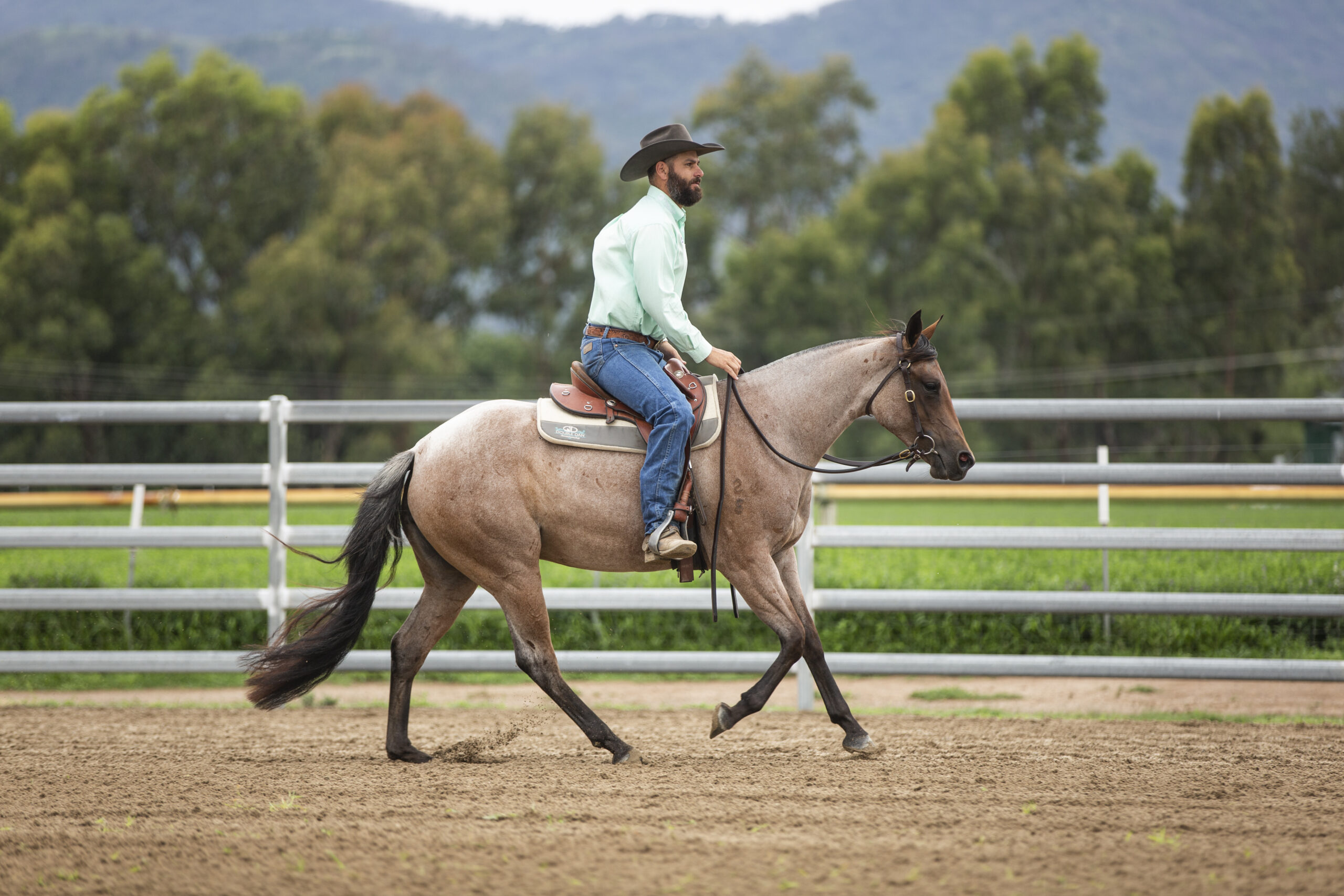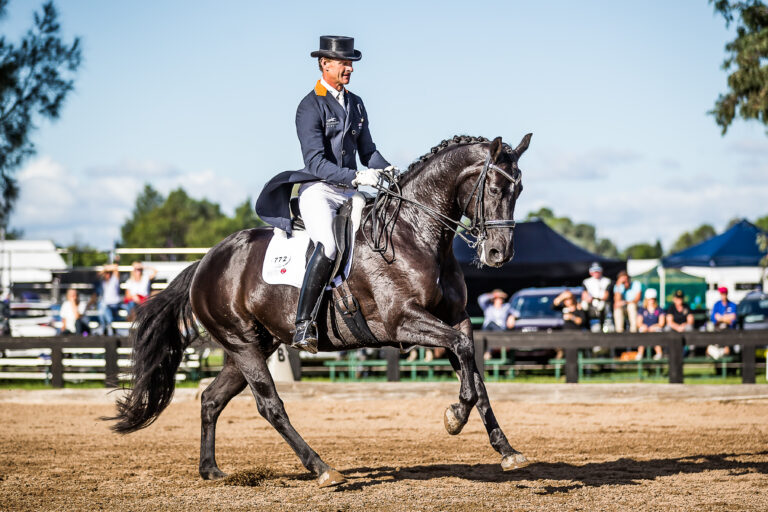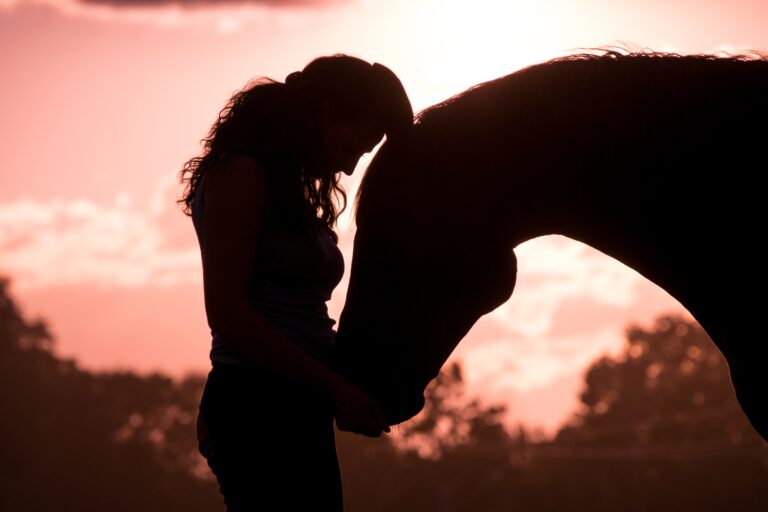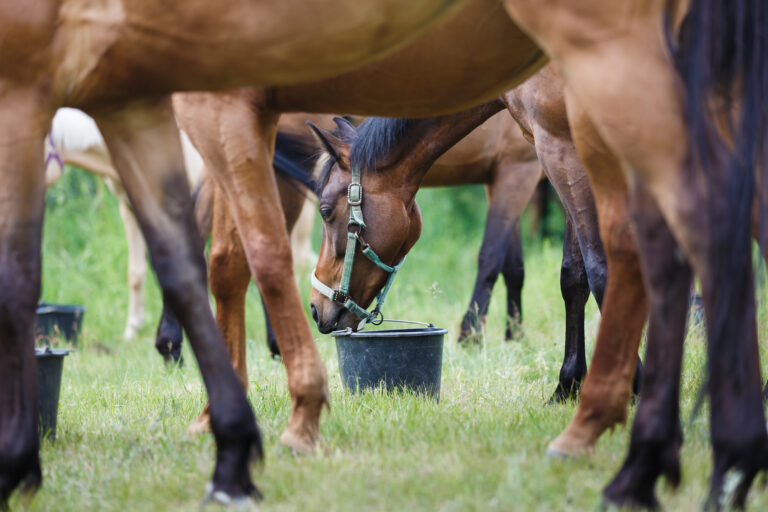By Dan Steers
Images supplied by Double Dan Horsemanship.
1. NOT OVERWORKING THEM
Particularly with good horses, we get all excited to ride them and to work them, and often push them too far, and the horses eventually sour off. Especially when I’m getting a sale horse ready, it’s really easy to try and push them in those last few weeks in an effort to get the most out of them, thinking that’s going to add value.
I make sure that in those last couple of weeks I’m really maintaining a horse and trying to not train him too much and just keep him happy. If I am riding young horses, for example, and I come out and my horses do everything that I need them to do, I want to pack them up as quickly as possible and let them really dwell on their responses.
2. KEEPING THINGS FRESH
This goes back to a Warren Backhouse quote where he said that if a horse is anticipating what we do, it’s not the horse’s fault — it’s our fault for being predictable. When I am training and teaching, I want to make sure I am keeping things fresh. That can be just taking the horses out of the arena for training sessions, or it could be substituting a riding lesson for a groundwork lesson, and maybe even working on versatility. Sometimes people don’t realise their horse’s versatility, or pigeon-hole the horse to their breed or discipline, but as a general rule our horses are extremely versatile. I’ll even practise on a quarter horse or a stock horse, maybe jumping through jumps if they’re available, and vice versa — I’ll have a warmblood track a cow if one’s available, just to keep that variety up! It helps keep the horse fresh.
3. SPELLING IS IMPORTANT
When starting young horses, if we find that they’re going really well, we like to then spell them for an extended period of time. A lot of people get a bit excited when the horse is going really well, especially the young horse; they keep them in work for long periods of time, and — going back to my to my first tip — they get the horse a little bit turned off. So, for me if I am starting a young horse, once I am happy with him, I am not afraid to then tip him out in the paddock for three, six, nine or even 12 months, because the general rule of thumb is they actually become better than when you tipped them out. Don’t be afraid of spelling, especially when it comes to young horses!
4. PADDOCK TIME
We’ve built a new facility here at our Australian base, and I don’t actually have stables. I’ve got undercover yards that are really breezy, and they’re big so the horses can walk around. It’s got a sand base rather than a sawdust base; they can communicate to other horses, they can see what’s going on around the farm, and they get heaps of airflow.
I think it’s important (to have the yards) if I do need to lock my horses up for whatever reason, but if I typically can, I have them all out in paddocks — and that keeps my horses really happy. A lot of people might have seen our liberty horses perform, and there’s numerous horses working together as a team, so I always try to keep those guys paddocked together so they’re obviously used to each other. They have their own natural pecking order worked out so that when I do go and work them together they’re not all stressed about being introduced with other horses — they’re not working out their pecking order in front of an audience!







